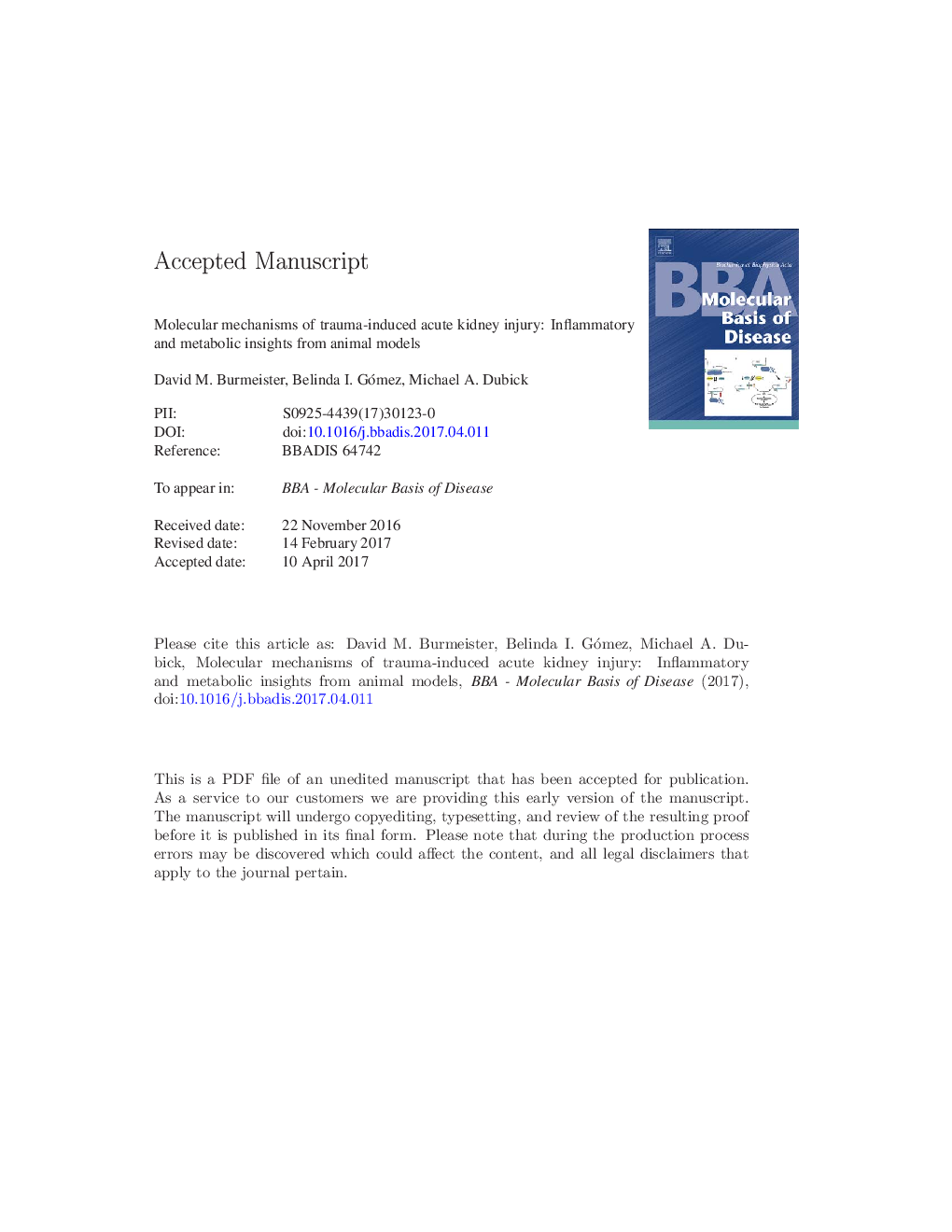| Article ID | Journal | Published Year | Pages | File Type |
|---|---|---|---|---|
| 8258948 | Biochimica et Biophysica Acta (BBA) - Molecular Basis of Disease | 2017 | 43 Pages |
Abstract
Trauma-induced acute kidney injury (AKI), such as after hemorrhagic shock (HS) or burn, remains a significant problem in the intensive care unit and is associated with increased mortality. The pathophysiology that drives AKI post-trauma is multi-factorial, and includes both inflammatory and metabolic alterations. Identifying the systemic profile that contributes to AKI is crucial not only for early diagnosis, but also for identifying treatments that improve kidney function and maintaining long-term patient health. In an effort to elucidate this molecular pathophysiology researchers have utilized a variety of animal models including chemically-induced (i.e., cisplatin), blocking renal perfusion (i.e., arterial clamping) and inducing burn or HS. As the latter burn and HS models are unequivocally applicable to studying AKI in the context of traumatic injury, this review will summarize the inflammatory and metabolic insights associated with AKI gained with these animal models. Moreover, novel therapeutic strategies brought forth with these models will be discussed.
Keywords
nuclear factor κ-BERKMSCTBARSRNSEPOMPTPPAMPTLRAQPDAMPGSHIKKHMGB1MODMCP1HIFAKIMDARIFLEKDIGOGFRTBSAJnkJun N-terminal kinaseLPSADQIMPOMAPKNFκBNOxROSacute kidney injuryAktaquaporinAcute Dialysis Quality InitiativeMultiple organ dysfunctionerythropoietininflammationdamage-associated molecular patternspathogen-associated molecular patternsmitochondrial permeability transition poreNADPH oxidaseCSAinterleukinKidney Disease Improving Global OutcomesTerminal deoxynucleotidyl transferase dUTP nick end labelingOxidative stresstumor necrosis factor-αTUNELToll-like receptorhigh-mobility group box 1BUNHemorrhageSODTotal body surface areaMesenchymal stem cellBurnSuperoxide dismutaseCyclosporine AAcute Kidney Injury NetworkHemorrhagic shockVascular endothelial growth factorVascular Endothelial Growth Factor (VEGF)TNF-αmean arterial pressureTRAILlipopolysaccharideTNF-related apoptosis-inducing ligandmalondialdehydeAnimal modelsthiobarbituric acid-reactive substancesmyeloperoxidaseknockoutGlomerular filtration ratemapblood urea nitrogenNitric oxideheme oxygenaseAKINmonocyte chemoattractant protein 1protein kinase Bmitogen-associated protein kinaseextracellular signal-regulated kinaseGlutathionereactive nitrogen speciesReactive oxygen species
Related Topics
Life Sciences
Biochemistry, Genetics and Molecular Biology
Ageing
Authors
David M. Burmeister, Belinda I. Gómez, Michael A. Dubick,
